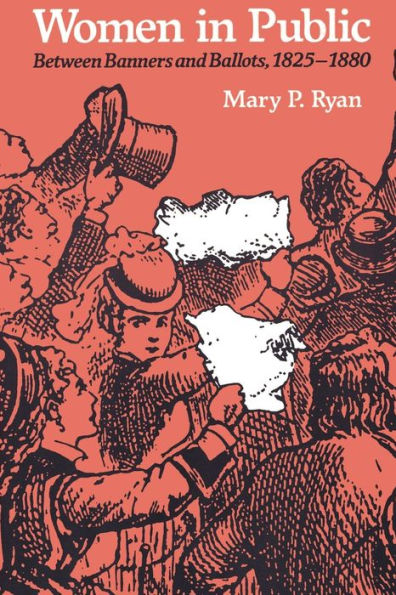Contrary to current perceptions, Ryan contents, nineteenth-century women appeared in public in a variety of roles. They took part in civic ceremonies, from Independence Day celebrations to ethnic festivals. Whether they consorted in parks designed for "ladies" or in the increasingly regulated haunts of prosititutes, their place in the everyday life of the streets became more segreated and distinct. Denied access to the voting booth, they practiced "outdoor politics," waving handkerchiefs at rallies—and wielding brickbats in riots.
Exploring little-noted aspects of nineteenth-century political discourse, Ryan shows how gender and sexual imagery in public language changed as the century progressed. She analyzes the construction of boundaries between private and public spheres and examines the American political system's failure to accommodate difference within democratice order.
Contrary to current perceptions, Ryan contents, nineteenth-century women appeared in public in a variety of roles. They took part in civic ceremonies, from Independence Day celebrations to ethnic festivals. Whether they consorted in parks designed for "ladies" or in the increasingly regulated haunts of prosititutes, their place in the everyday life of the streets became more segreated and distinct. Denied access to the voting booth, they practiced "outdoor politics," waving handkerchiefs at rallies—and wielding brickbats in riots.
Exploring little-noted aspects of nineteenth-century political discourse, Ryan shows how gender and sexual imagery in public language changed as the century progressed. She analyzes the construction of boundaries between private and public spheres and examines the American political system's failure to accommodate difference within democratice order.

Women in Public: Between Banners and Ballots, 1825-1880
208
Women in Public: Between Banners and Ballots, 1825-1880
208Paperback(REPRINT)

Product Details
| ISBN-13: | 9780801844010 |
|---|---|
| Publisher: | Johns Hopkins University Press |
| Publication date: | 02/01/1992 |
| Series: | The Johns Hopkins Symposia in Comparative History , #16 |
| Edition description: | REPRINT |
| Pages: | 208 |
| Sales rank: | 734,170 |
| Product dimensions: | 6.00(w) x 9.00(h) x 0.50(d) |
| Age Range: | 18 Years |
